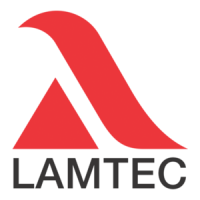209
8 CO/O
2
Control
8.6 Why Control CO?
8.6.1 Where Can CO Control be Used?
For the combustion of gaseous fuels, such as:
• Natural gas H, L
• Biogas
• Process and exhaust gases
• Hydrogen
And for fuels for which a reduction in the combustion air forms a CO edge, such as:
• Lignite dust
• Coal firing
For liquid fuels such as light fuel oil, control is possible on the basis of the CO concentration
in the exhaust gas only for so-called ’blue burners’ (blue flame).
For technical reasons, however, these are only available in the output range up to several 100
kW. For industrial furnaces, so-called ’yellow burners’ (yellow flame) are therefore used exclu-
sively today for liquid fuels. In the combustion of liquid fuels with a yellow flame, soot normally
forms first before the CO concentration rises noticeably. For this reason, CO control is not pos-
sible with oil burners with a yellow flame.
In the case of LAMTEC CO/O
2
control, you can regulate on the basis of either CO or O
2
, al-
ternatively. This can be done depending on the fuel or firing rate. Firing rate-dependent switch-
ing from CO control to O
2
trim may be necessary if, for example, the stability of the flame or
the NO
x
concentration in the exhaust gas makes it necessary to have a higher level of excess
air. ’On-the-fly’ switching from CO control to O
2
trim is possible in a firing rate-dependent man-
ner without the need to interrupt control.

